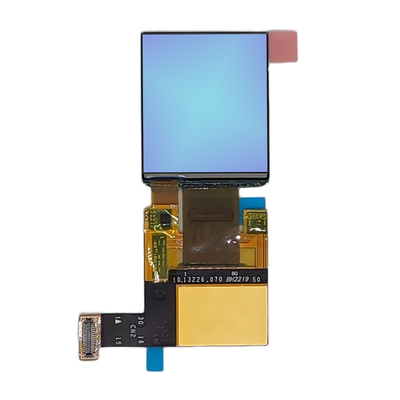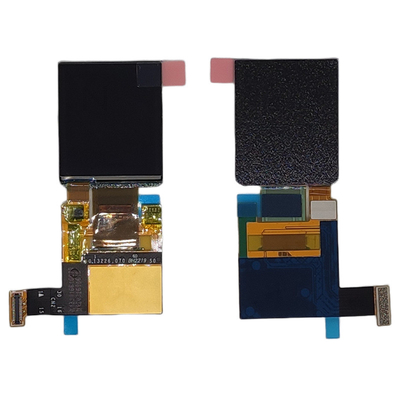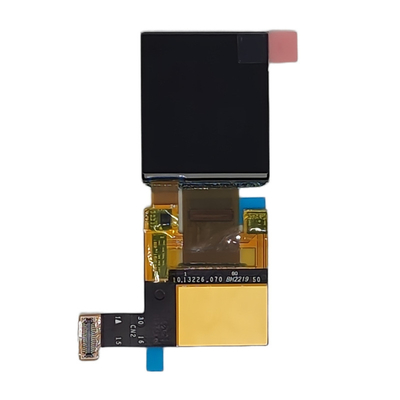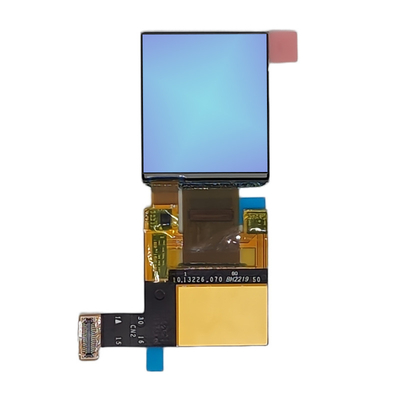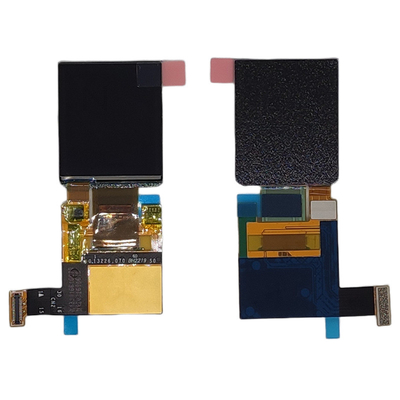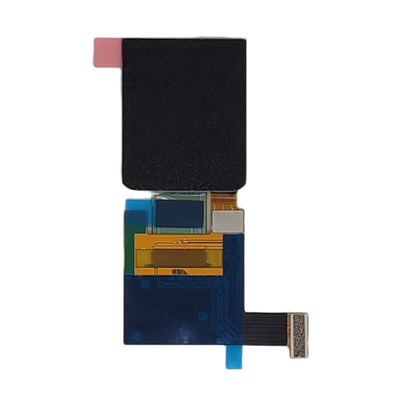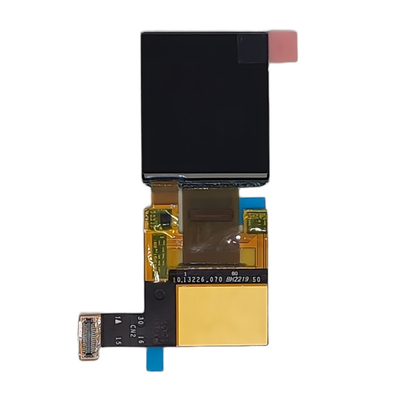-
Anzeige LCD TFT
-
Touch Screen TFT-Anzeige
-
Runde TFT-Anzeige
-
tft Farbbildschirm
-
amoled Anzeigenmodul
-
Mikro -OLED -Anzeige
-
Stangen-Art TFT
-
Quadratische TFT-Anzeige
-
Hohe Helligkeit LCD-Anzeige
-
COB-LCD-Display
-
Sonnenlicht lesbares TFT
-
Anzeige UARTs TFT
-
Lcd-Anzeigenmodul
-
PMOLED-Anzeige
-
epaper Anzeige
-
Digitalanzeige LED
-
Kapazitives Fingerspitzentablett
450cd/m2 Helligkeit 1,41 Zoll quadratisches AMOLED-Display-Modul 320 x 360 Auflösung mit OnCell-Touch MIPI / SPI / QSPI-Schnittstelle
| Herkunftsort | China |
|---|---|
| Markenname | HuaXin |
| Zertifizierung | ISO14001/ ISO9001/IATF16949 |
| Modellnummer | ESHX0141320360 |
| Min Bestellmenge | 1000 |
| Preis | Verhandlungsfähig |
| Verpackung Informationen | Blister+Schaumbüchse+Blasenbeutel+Innenkarton+Masterkarton |
| Lieferzeit | 6 bis 8 Wochen |
| Zahlungsbedingungen | T/T |
| Versorgungsmaterial-Fähigkeit | 50K pro Monat |

Treten Sie mit mir für freie Proben und Kupons in Verbindung.
WhatsApp:0086 18588475571
wechat: 0086 18588475571
Skypen: sales10@aixton.com
Wenn Sie irgendein Interesse haben, leisten wir 24-stündige Online-Hilfe.
x| Display Technology | Amoled Touchscreen | Name | AMOLED-Modul |
|---|---|---|---|
| Größe | 1,41" | Auflösung | 320 x 360 |
| Helle | 450cd/m2 | Schnittstelle | MIPI/SPI/QSPI |
| IC-Antrieb | Die Kommission hat die Kommission aufgefordert, die folgenden Maßnahmen zu treffen: | ||
| Hervorheben | SPI AMOLED-Display-Modul,MIPI-Amoled-Anzeigemodule,QSPI AMOLED-Displaymodul |
||
Der Wert der Verbrennungsmenge ist zu messen.ist ein 1,41 Zoll quadratisches AMOLED OLED-Modul mit Oncell Touch, 320*360 Auflösung, MIPI/SPI/QSPI Schnittstelle, Helligkeit ist 450 Cd/M2 Farb OLED-Display, Fahr IC ist RM69330F12/SH8601A
A: Produktparameter
| Teil Nr. | Der Wert der Verbrennungsmenge ist zu messen. |
| Anzeigemodus | 1.41 Zoll AMOLED-Display |
| Umrissgröße ((mm) | 26.04 (W) x31.78 (H) x0.75 ((D) |
| Größe AA ((mm) | 23.84 × 26.82 |
| Anzeigen von Punkten | 320*360 |
| Blickwinkel | alle |
| Helle | 450 |
| Schnittstelle | MIPI/SPI/QSPI |
| Fahr-IC | Die Kommission hat die Kommission aufgefordert, die in den Artikeln 6 und 7 genannten Maßnahmen zu ergreifen. |
| Berühren | aufzellen |
B:Bild des Produkts
![]()
![]()
![]()
![]()
C: Zeichnung und Definition
D: Produktkenntnisse
Vorteile der OLED:
OLED-Geräte sind leichter und dünner als LCDs, hoher Kontrast, hohe Farbsättigung, geringerer Verbrauch
Nachteile der OLED
AMOLED ist extrem teuer als LCD und TFT, die Lebensdauer ist kürzer als LCD und TFT
E. Unternehmensinformationen
Vorteil von Huaxin:
1. Produktionsstätte im Inland, die kostengünstig ist
2. modernste neue Ausrüstung, die die Qualität stabil halten kann
3. die meisten Prozesse mit vollautomatischer Ausrüstung mit effektiver und stabiler Qualität
4. professionelle Ingenieure und Produktionsleiter, die seit mehr als 20 Jahren im Bereich LCD arbeiten
5. Selbstdesign für maßgeschneiderte Produkte
unsere Zertifikate
1.ISO14001/
2.ISO9001/IATF16949
3.SGS des LCD-Moduls
- Huaxin Technology (Enshi) Co., LTD.
- Hubei.Enshi
- Gründungsdatum:2009
- Hightech-Unternehmen hauptsächlich in Forschung und Entwicklung tätig, produziert und vertreibt LCD,LCM,TFT,Hintergrundbeleuchtung,OLED
- LCD umfasst: VA,TN, HTN, STN, FSTN, CSTN und andere Serien
- LCM umfasst: COB,TBA, COG,TP,LED-Hintergrundbeleuchtung und andere Serien
- Registerkapital:zwanzig Millionen
- derzeitige Mitarbeiter: mehr als 500
- Auf die Entwicklung und Entwicklung entfällt 10%
- QC macht 15% aus
F:Produktionskapazität
| Jahresproduktion Kapazität |
2021 (Stand) | 2022 (Ziel) | 2023 (Herausforderung) | 2024 (Ausforderung) | 2025 (Herausforderung) | Anmerkung | ||
| LCD-Produkt Kapazität |
4.5 | 9 | 9 | 9 | 9 | Einheit:Tausende Logarithmen/Tag |
||
| LCM-Produkt Kapazität |
70 | 150 | 300 | 450 | 450 | Einheit: Tausend Stück/Tag |
||
| Hintergrundbeleuchtung Kapazität |
100 | 200 | 300 | 500 | 500 | Einheit: Tausend Stück/Tag |
||
| OLED-Produkt Kapazität |
10 | 20 | 30 | 40 | 50 | Einheit: Tausend Stück/Tag |
||
G: Anwendung des Produkts
1.Sicherheitsausrüstung und -instrument
2.schließung und Smart Home
3.Sender und Uhr
4.watch&radio
5. Kollimator und Navigator
H: AMOLED-Display-Eigenschaften
1.Selbst-E-Briefpixel:
2.Kontrastverhältnis:
3Farbgenauigkeit und Lebendigkeit:
4Blickwinkel:
5Energieeffizienz:
6.Dünnheit und Flexibilität:
7- Reaktionszeit:
I: Wie ist die Energieeffizienz von AMOLED-Displays im Vergleich zu anderen Displaytechnologien?
1.Stromverbrauch:
- AMOLED-Displays verbrauchen Strom pro Pixel, was bedeutet, dass Pixel, die schwarze oder dunkle Inhalte anzeigen, sehr wenig Strom verbrauchen.während Pixel, die hellen oder weißen Inhalt anzeigen, mehr Strom verbrauchen.
- LCD- und LED-Displays hingegen benötigen eine konstante Hintergrundbeleuchtung, die unabhängig vom angezeigten Inhalt Strom verbraucht.
2Abhängigkeit von Inhalten:
- AMOLED-Displays sind für Inhalte mit vielen dunklen oder schwarzen Bereichen energieeffizienter, da die einzelnen Pixel ausgeschaltet werden können, um Energie zu sparen.
- LCD- und LED-Displays verbrauchen unabhängig vom angezeigten Inhalt eine relativ konstante Menge an Strom, da die Hintergrundbeleuchtung aktiv bleibt.
3.Helligkeitskontrolle:
- AMOLED-Displays können die Helligkeit einzelner Pixel dynamisch anpassen, was eine bessere Energieeffizienz bei niedrigen Helligkeitsszenarien ermöglicht.
- LCD- und LED-Displays haben in der Regel eine feste Hintergrundbeleuchtung, was zu einem höheren Stromverbrauch führen kann, auch wenn der Displayinhalt keine maximale Helligkeit erfordert
4. Anzeigegröße
- AMOLED-Displays sind für kleinere Bildschirmgrößen tendenziell energieeffizienter, da der Stromverbrauch mit der Anzahl der Pixel wächst.
- Größere LCD- und LED-Displays benötigen möglicherweise mehr energieintensive Hintergrundbeleuchtung, was ihre Energieeffizienz im Vergleich zu AMOLED-Displays der gleichen Größe möglicherweise reduziert.



